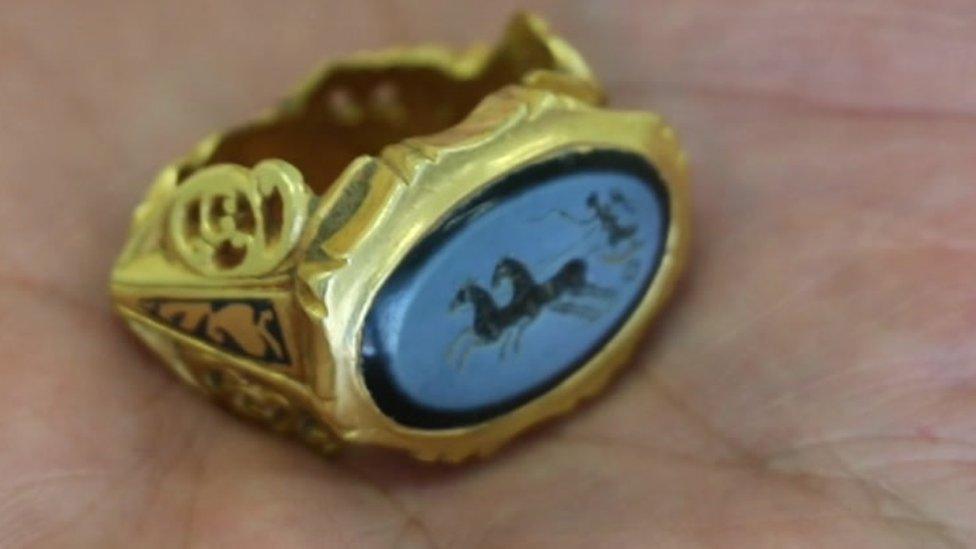Wiveliscombe bishop's palace discovered during building work
- Published

The foundations are believed to date from the 13th Century and consist of a later cobbled floor and the remains of a medieval wall and fireplace.
The foundations of a medieval bishop's palace have been uncovered during construction work on a new bungalow.
The foundation wall, found in Palace Gardens in Wiveliscombe, date from the 13th Century and have identified the precise location for the palace.
The palace would have been one of a number of residences the Bishop of Bath and Wells used in Somerset.
County archaeologist for the South West Heritage Trust, Bob Croft, said this was a "significant find".
There are several documentary references to the Bishops of Bath and Wells carrying out major building works in Wiveliscombe, near Taunton, with Bishop Drokensford (1309-29) and Bishop Ralph of Shrewsbury (1329-63) both undertaking works there.
'Important dot on the map'
Although the general site was known, the discovery of the foundation wall has provided archaeologists with the precise location.
Mr Croft said: "The gateway is still there, what we didn't know is where the buildings would have been in relation to that gateway.
"They've often been thought of as being much further to the east where we knew there was a big barn and a big open space, but this is the first time we've actually got stone foundations discovered.
"It's put an important dot on the map of Wiveliscombe, but also on the map of Somerset."
Mr Croft believes that over the centuries, the stone from the wall would have been re-purposed by local people for other buildings.
Archaeological recording work has now been completed and discussions to preserve the foundations are underway.
Related topics
- Published10 March 2021

- Published15 February 2021

- Published1 August 2018
